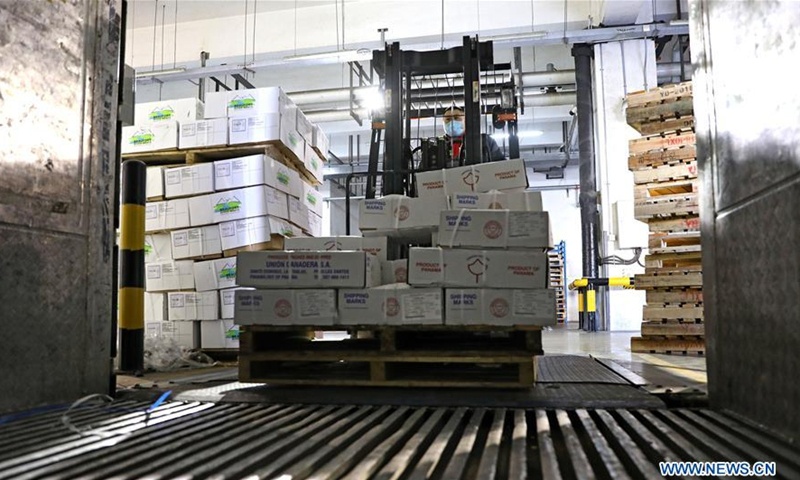
A worker unloads boxes of imported frozen meat at a cold storage at Dalian port in Dalian, northeast China's Liaoning Province, April 8, 2020. Since it resumed operation, the port has streamlined its cold chain operation attempting to achieve greater efficiency. (Photo: Xinhua)
Disinfection in low temperatures and freezing environments has become a new challenge in combatting COVID-19, as many places in China have detected the coronavirus on the outer packaging of imported cold-chain products, and concerns over coronavirus transmission via cold-chain products continue to grow.
Disinfecting the outer packaging of cold-chain products works well in room temperature environments, but it becomes ineffective in low temperatures. "Sometimes, low temperatures significantly 'play down' the effectiveness of disinfectants or disinfection approaches, and sometimes even makes common approaches completely ineffective," Zhang Liubo, chief expert on disinfection from the Chinese Center for Disease Control and Prevention, said at a press conference on Wednesday.
So far, there are no safe and effective disinfectants or disinfection methods that can eliminate the coronavirus in low temperature environments; however, research is underway to find a reliable and technical method to address this concern, according to Zhang.
For example, when using fumigation techniques, the disinfectant should remain in a gas state and not turn into a liquid, Zhang noted. However, the disinfectant often turns into a liquid as its temperature changes when it becomes exposed to cold food products.
A widely used approach now is using disinfectant sprays. But we should make sure that the disinfectant has a low freezing point to avoid it freezing when it hits the frozen food outer packaging in low temperatures, Zhang said. He reminded that disinfectant spray should come in contact with every side of the packaging and in every position of the package, with a certain contact time, to achieve the maximum effect.
Zhang noted that it is essential to make sure the employed method is backed up with successful trials and lab statistics showing that it can kill the coronavirus in temperatures below zero degrees Celsius. Moreover, possible food contamination needs to be considered to make sure the food is safe for consumption.


